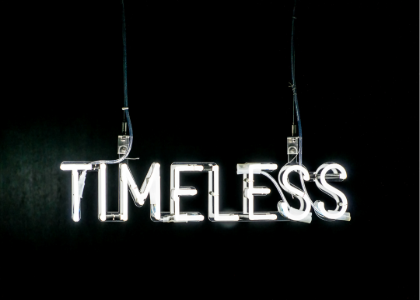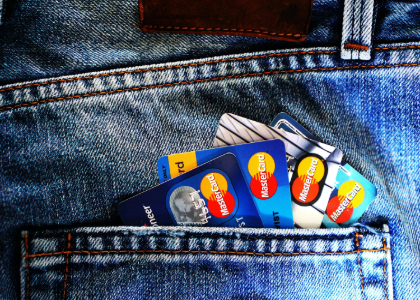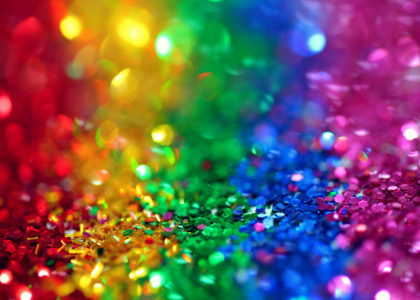Blog
_1176x840.jpg?t=638880979100000000)
Understand the Different Image Formats
SVG, PNG, JPEG, GIF... You know they are images, but do you really know what the differences are between these formats? Do you know which one is the best option for content on your website? What about in your printed promotional materials? Choosing the right aspect ratio for an image is essential to ensure optimal display and save you a lot of hassle. A bad choice can lead to several issues, including a loss of quality, a background that displays poorly or a file that is too large, which slows down the loading of a webpage. For example, a JPEG logo may appear pixelated when enlarged, while a PNG image may not print correctly. Whether you're creating a website, visual for advertising, or logo, it's crucial to understand the specifics of each format. Here's a handy guide to help you make the right choice!
The types of images
Image formats can be classified into two main categories: vector images and raster images.
In a vector file, the data is stored as mathematical formulas to generate vectors, which allows the image to be resized without any loss of quality. That's why this type of format is particularly well suited for logos, they remain sharp when resized. SVG, AI, and EPS are vector files.
Raster images, also known as rasterized images, are made up of pixels, i.e. small fixed points. In exact terms, this means that the quality of the image decreases when it is enlarged and improves when it is reduced. This type of format is often used for photos and highly detailed visuals. This includes JPEG, PNG, GIF, TIFF, and RAW files.
The most common formats
For use on the web
SVG
When you create your logo with FreeLogoDesign, you'll be able to download it in SVG format and use it on your platforms. Since it is a vector format, the quality of the image remains unchanged, regardless of its size. Another advantage: SVG files are written in XML code, which means that search engines can read them and extract keywords from them. An asset not to be neglected for web referencing! In addition, SVG is a lightweight format that is easily editable. Whether you're working with FreeLogoDesign or other graphic design software, you'll be able to adjust your logo without losing quality.
JPEG
Whether the extension is .jpg or .jpeg, it makes no difference as to what this format is made of. JPEG (Joint Photographic Experts Group) is a widely used format on the web. Once compressed, this type of image can grow to a small size. This is a useful feature in the digital world, as it allows pages to load quickly. This format is also compatible with a wide variety of interfaces and software, making it very versatile.
What are the limits of JPEG? Since it is a rasterized format, it loses quality when compressed. It is also not possible for a JPEG image to have a transparent background. That's why it's best not to have your logo only in JPEG.
PNG
The PNG (Portable Network Graphics) format is perfect for images that require a transparent background, such as logos and icons. Unlike JPEG, it preserves the quality even after compression, but the files are also larger.
We should tell you that these files are exclusively in RGB color. Because printing typically uses CMYK mode, a PNG image may not look as you expect when printed on paper. So, you should only use them for digital media.
GIF
Everyone knows the GIF, this animated format has been all the rage on social networks for several years. This small file size is very useful for creating short animations. On the other hand, this format only uses 256 colors, which leads to a significant loss of quality. Making your company logo in this format is therefore not recommended, but you could make it into a GIF to create an animated version.
Use for printing and graphic design
AI
The .ai extension is used for files created with Adobe Illustrator, a must-have software for graphic designers. Since it is a vector format, it allows you to resize an image infinitely without losing quality. Professionals regularly use it to create logos and other promotional materials.
Illustrator is particularly popular in the printing industry because it supports CMYK colors, the printing standard. It also allows you to export your designs in other vector formats, such as SVG, which is more suitable for digital platforms.
TIFF
This format is rarely found on the web, and for good reason: its file size is often very large. After all, having so many details takes up space!
RAW
Generally, photographs are captured in a RAW format, as it preserves the most visual information. That means there is a lot of detail in this rasterized image. This format offers great flexibility to photographers and graphic designers who want to edit their images.
However, RAW images must be converted before they can be used. It is possible to do this with software such as Lightroom or Photoshop.
Choosing the right image format makes all the difference, whether it's for a website, a printed marketing document or your visual identity. An unsuitable format can harm the quality of your image, the speed of your site, and even your brand image.
Do you want a professional logo that is perfectly optimized for all your needs? With FreeLogoDesign, you can create a logo in minutes! Try it now and give your brand the image it deserves!
More tips and tricks on the blog


